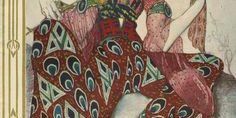This is a video I made explaining a principle of emotional valuation developed by Saint Ignatius of Loyola. It’s quite short — only about a minute and a half — so I thought I’d add a bit of context here.
V&R Chapter 4 explores Adam Smith’s theory of moral sentiments and it would be interesting to know whether Ignatius’s method had filtered through Jesuit institutions to the broader intellectual culture by Smith’s time. From Shaftesbury and Smith in the 1700’s up to Meinong and Scheler in the twentieth century, there is a “school” of ethical analysis that relies on how we emotionally react to objects. Ignatius called this the discernment of spirits.
I hope to post more on this method but let me give two quick examples. Recently I came across the British fashion blog Style Bubble written by Susanna Lau (http://stylebubble.co.uk/). I reacted very well to it and I tried to assess what my emotions were. I had been looking at some other blogs which I didn’t care for, so what was the difference? Lau divides many of her posts between writing and photos that she takes. I felt at home with the writing (perhaps because I am an academic who writes a lot) and I was fascinated by the photos clearly focused on the details of the clothing (likely because I admire craft work so much). Shaftesbury is interested in symmetry as a root of aesthetic and moral value and I felt an alignment between myself and Lau’s work. This is what Ignatius calls consolation, the feeling of community.
I also had a very positive reaction to this article about Mackintosh’s reinvention as a luxury brand (https://www.businessoffashion.com/articles/intelligence/can-kiko-kostadinov-make-mackintosh-cool). I surely felt at home because it is Scottish (my Mum and Dad are Scottish though I was born in England) and I was drawn to the head designer’s interest in uniforms (this recalled Huizinga and dress-ups).
As I read on though, I felt a creeping loneliness. Mackintosh is famous for its rainwear but the company wants to move forward as a brand with a varied set of clothing/accessories. The company thinks this means finding suppliers outside of Scotland. Initially anxious, I was cheered by the fact they are turning to Italy and Japan (the company is Japanese owned) as both countries have developed craft cultures and solid working conditions. As frequent visitors to the site know, I believe Scheler’s model of the estate is a benchmark for business plans.
So, just a couple of examples to show how consolation and desolation act like compasses around the value tones of objects.
How do you emotionally respond to the ballet poster at the top of this post? Consolation or desolation? It makes me anxious, for whilst I grasp its almost geometrical formality, it still comes across as frenetic (perhaps the patterning on the clothes?).
*The video posted is one I am using in a course I am teaching at the Master’s level on Accounting: I teach the ethics component of Loyola’s MA in Accounting designed to have the students think about the moral role accountancy plays in our civilisation.






